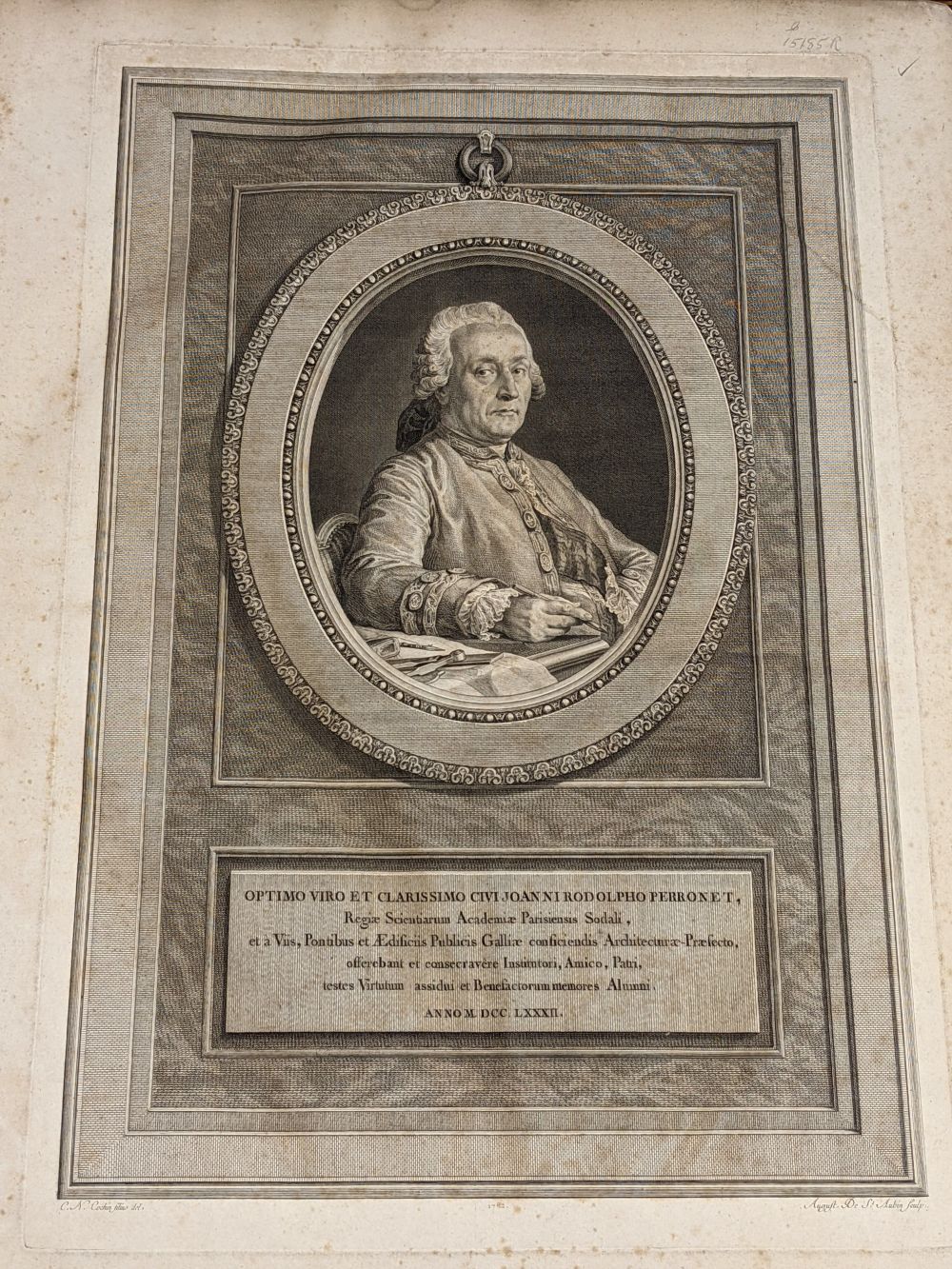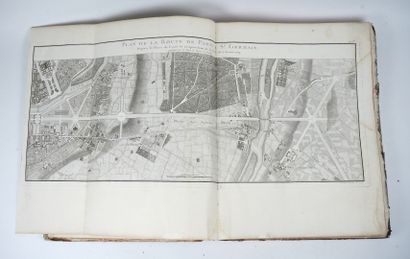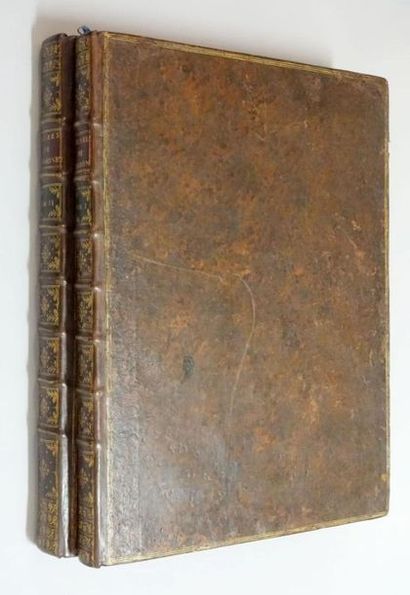Jean-Rodolphe Perronet
Description des projets et de la construction des ponts de Neuilly, de Mantes, d’Orléans et autres, du projet du canal de Bourgogne, pour la communication des deux mers par Dijon, et de celui de la conduite des eaux de l’Yvette et de Bièvre à Paris. [and] Supplément. Paris: de l’Imprimerie Royale; Didot & Jombert, 1782-1783, 1789
FIRST EDITIONS, 3 volumes, folio (first two volumes: 572 x 420mm.; supplement: 595 x 435mm.), engraved frontispiece portrait, engraved vignettes on titles, and 78 FINE ENGRAVED PLATES (many folding or double-page), 67 in the main work and 11 in the supplement, contemporary polished mottled calf, spines gilt in compartments, red and green morocco labels, blue endpapers, gilt edges (supplement in original paste-paper boards, recased with modern endpapers), occasional paper toning or browning, supplement spine worn
With the rarely seen supplement, this is an uncommonly fine contemporary copy of the handsomely illustrated giant folio describing the planning and construction of the stone arch bridges perfected by Jean-Rodolphe Perronet, considered by many to be the father of modern bridge building. Perronet (1708-94) made a series of engineering innovations which substantially reduced the size and cost of a bridge’s piers and foundations; he also constructed some of the most aesthetically pleasing bridges of their time, among them his Pont de la Concorde in Paris and the Pont de Neuilly. Both are described and illustrated in this work, along with his bridges at Orléans, Mantes, and his most daring construction, the Pont-Sainte-Maxence, with its rise-to-span ratio of 1:11 (contrasted with traditional 1:5).
Perronet served as the first director of the École des Ponts et Chaussées (still the premier French engineering school), and as First Engineer to King Louis XV.
REFERENCES: Roberts & Trent, Bibliotheca Mechanica, p.249 (this copy)
PROVENANCE: “Bibliotheca Mechanica”, book label
Jean-Rodolphe Perronet
Description des projets et de la construction des ponts de Neuilly, de Mantes, d’Orléans et autres, du projet du canal de Bourgogne, pour la communication des deux mers par Dijon, et de celui de la conduite des eaux de l’Yvette et de Bièvre à Paris. [and] Supplément. Paris: de l’Imprimerie Royale; Didot & Jombert, 1782-1783, 1789
FIRST EDITIONS, 3 volumes, folio (first two volumes: 572 x 420mm.; supplement: 595 x 435mm.), engraved frontispiece portrait, engraved vignettes on titles, and 78 FINE ENGRAVED PLATES (many folding or double-page), 67 in the main work and 11 in the supplement, contemporary polished mottled calf, spines gilt in compartments, red and green morocco labels, blue endpapers, gilt edges (supplement in original paste-paper boards, recased with modern endpapers), occasional paper toning or browning, supplement spine worn
With the rarely seen supplement, this is an uncommonly fine contemporary copy of the handsomely illustrated giant folio describing the planning and construction of the stone arch bridges perfected by Jean-Rodolphe Perronet, considered by many to be the father of modern bridge building. Perronet (1708-94) made a series of engineering innovations which substantially reduced the size and cost of a bridge’s piers and foundations; he also constructed some of the most aesthetically pleasing bridges of their time, among them his Pont de la Concorde in Paris and the Pont de Neuilly. Both are described and illustrated in this work, along with his bridges at Orléans, Mantes, and his most daring construction, the Pont-Sainte-Maxence, with its rise-to-span ratio of 1:11 (contrasted with traditional 1:5).
Perronet served as the first director of the École des Ponts et Chaussées (still the premier French engineering school), and as First Engineer to King Louis XV.
REFERENCES: Roberts & Trent, Bibliotheca Mechanica, p.249 (this copy)
PROVENANCE: “Bibliotheca Mechanica”, book label















Testen Sie LotSearch und seine Premium-Features 7 Tage - ohne Kosten!
Lassen Sie sich automatisch über neue Objekte in kommenden Auktionen benachrichtigen.
Suchauftrag anlegen